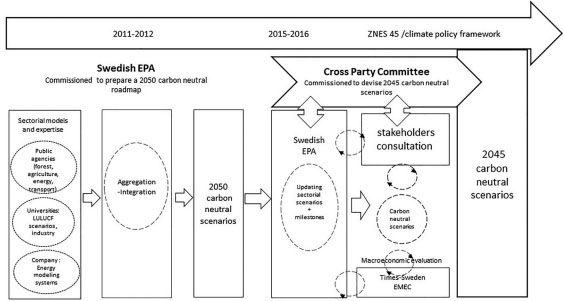Weaning strategies and protocols
By Michele Vitacca
To this end, new strategies and protocols for weaning from mechanical ventilation are clearly needed in the daily practice of healthcare.While unnecessary delays in withdrawing mechanical ventilation can increase the risk of complications, prolong ICU stay and significantly amplify healthcare costs, premature attempts at withdrawal of mechanical ventilation might lead to development of severe distress, hamper the recovery process and further delay weaning.4 Physicians often fail to recognize patients who may already be ready for extubation. Studies among patients who areThe chapter presents the state of the art of the weaning process including use of protocols derived from mechanical ventilation in patients with chronic obstructive pulmonary disease or those who experienced acute respiratory failure. The weaning process is a delicate time in the medical history of a patient who survives an acute episode of respiratory failure and spends a period of time under mechanical ventilation. In fact, during the period of mechanical ventilation, there are a lot of implications that are currently somehow underestimated in daily medical practice: occupation of beds, healthcare costs, burden for the families and for the patients themselves. Although these occurrences are quite common and critical, there are no clear guidelines on the minimal criteria required for assessing the correct weaning time for different diseases, or on the need for a screening test prior to a spontaneous breathing test. It is also crucial to identify the patients who can be considered possible successful responders to the weaning process. A careful review of the literature shows the crucial role of the respiratory therapist in the multidisciplinary team (physician, nurse, respiratory therapist and family as well), who should be involved in such a delicate process.
Determinants of Carbon Dioxide Tension
Shahrokh Javaheri
The major function of the respiratory system is to maintain normal arterial blood partial pressures of the two vital respiratory gases, O2 and CO2, and a normal pH. This important regulatory function is automatically controlled, and is referred to as the homeostatic (chemostatic or metabolic) function. Homeostatic regulation is achieved by adjustment of ventilation to the metabolic (O2 consumption=CO2 production) and acid-base needs of the organism (1). The respiratory system is also utilized for behavioral (nonhomeostatic) functions such as phonation and swallowing. The act of breathing, therefore, is complex and needs to be governed precisely by a set of hierarchically arranged control systems. The focus of this chapter is chemical control of breathing and regulation of PCO2.
Exhaled Nitric Oxide, Carbon Monoxide, and Breath Condensate
Sergei A. Kharitonov, Peter J. Barnes
Many lung diseases, including asthma, chronic obstructive pulmonary disease (COPD), bronchiectasis, cystic fibrosis, and interstitial lung disease, involve chronic inflammation and oxidative stress. Yet these are not measured directly in routine clinical practice because of the difficulties of monitoring inflammation. In asthma, fiber-optic bronchial biopsies have become the “gold standard” for measuring inflammation in the airway wall, but this is an invasive procedure that is not suitable for routine clinical practice and cannot be repeated often. It is also unsuitable for use in children and patients with severe disease. Symptoms may not accurately reflect the extent of underlying inflammation, due to differences in perception and masking by bronchodilators in airway disease. Measurement of airway hyperresponsiveness by histamine or methacholine challenge has been used in asthma as a surrogate marker of inflammation, but interpretation is confounded by the use of bronchodilator therapy. Furthermore, it is difficult to perform this measurement in children and in patients with severe disease.
Coping and Self-Management Strategies for Dyspnea
Virginia Carrieri-Kohlman
Despite optimal medical and pharmacological therapy, at one time oranother, most individuals with cardiopulmonary disease will experience either acute or chronic progressive dyspnea (shortness of breath). Whetherexperiencing acute dyspnea during a limited period or consistently withactivities of daily living, people need interventions or strategies that theyare confident will help them reduce and control this life-threatening, dis-tressing symptom. The purpose of this chapter is to review the theoreticalfoundations for ‘‘coping’’ and ‘‘self-management’’ strategies to reduceshortness of breath, to present the evidence from controlled studies forthe effectiveness of these strategies, and to discuss clinical and patient experiences that suggest efficacy of strategies when a scientific foundationis not available.
The Carbon Neutral Public Sector
Published in Public Management Review
This paper argues for research into the effectiveness of government strategies for a ‘carbon neutral public sector’. We review initiatives in three OECD countries: New Zealand, Australia and the UK. In all jurisdictions, government agencies have consistently stressed ‘leading by example’ as a rationale for adoption. ‘Direct mandate’ by the Prime Minister (NZ); ‘organic development’ from wider central government sustainability initiatives (UK); and a more ‘laissez faire’ approach by Australian Federal and State Governments, were identified as the general pathways leading to implementation. Our assessment indicates: a lack of understanding of the implementation process for carbon neutrality; a need to identify and critically examine the ‘offset threshold’ at which mitigation efforts cease and offsetting is adopted; an absence of any evaluation of the ‘leading by example’ rationale; a lack of inter-country comparisons; a gap in understanding the relationship with economic and social aspects of sustainability; and a need to evaluate the utility of core government departments as the focus of carbon accounting. We urge colleagues to consider research in this area with a view to contributing to the interdisciplinary solutions which we believe are required.
Carbon neutral destinations: a conceptual analysis
Published in Journal of Sustainable Tourism
Hybrid buildings: a pathway to carbon neutral housing
Published in Architectural Science Review
New Zealand 's abandonment of the Carbon Neutral Public Service programme
Published in Climate Policy
Aboveground carbon stocks in oil palm plantations and the threshold for carbon - neutral vegetation conversion on mineral soils
Published in Cogent Environmental Science
Ni’matul Khasanah, Meine van Noordwijk, Harti Ningsih, Serge Wich
 Africa
Africa  China
China  Japan
Japan 

